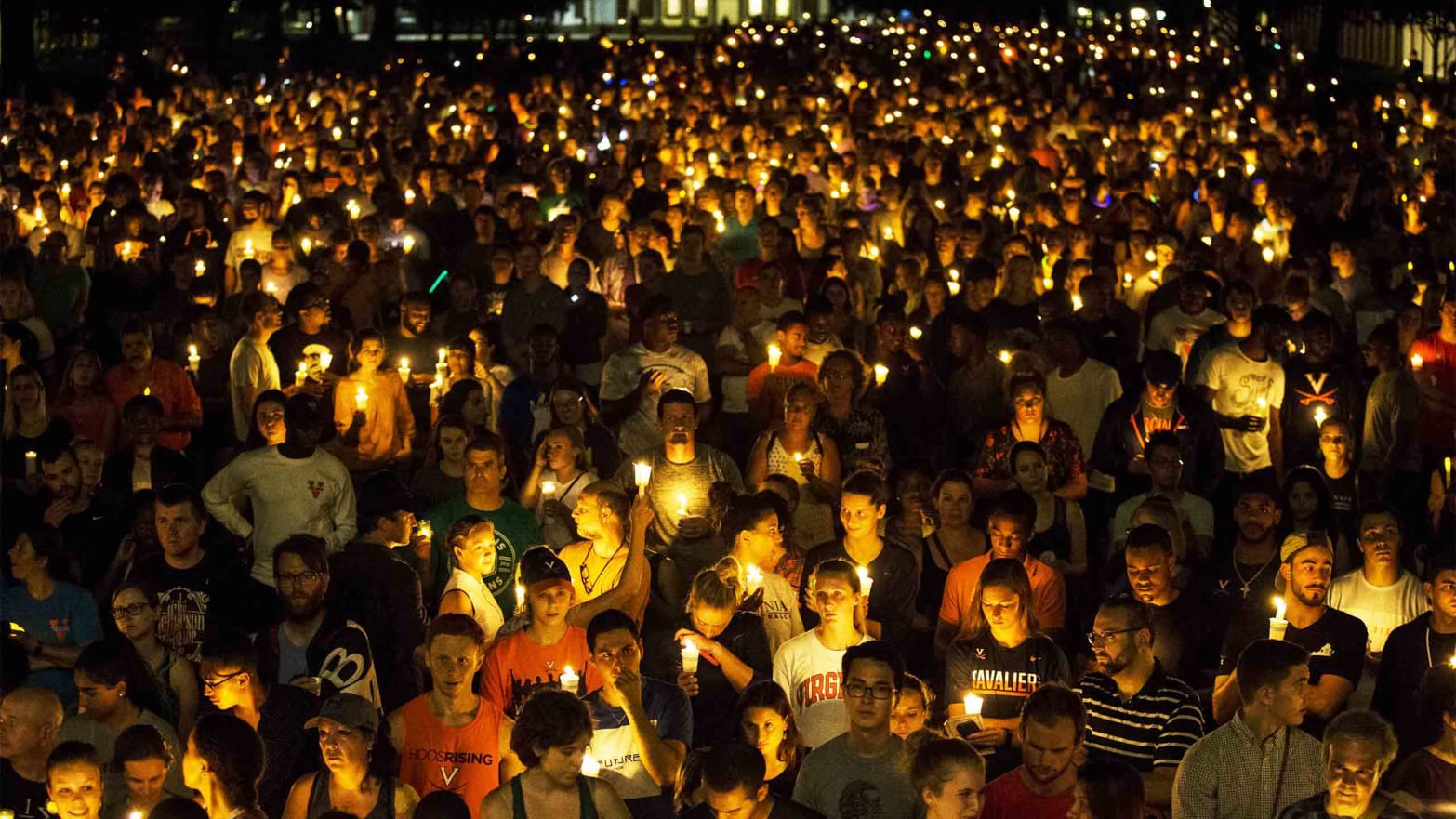CHARLOTTESVILLE, Virginia—Wednesday was a day of mourning and remembrance in Charlottesville—and secrecy.
It began with a public memorial service in Charlottesville’s historic Paramount Theater. Guests were asked to wear purple, which was Heather Heyer’s favorite color. Heyer was killed on Aug. 12 by a white supremacist who drove a Dodge Challenger into a crowd of protesters following a rally of far-right radicals.
The theater Wednesday was filled to capacity, as was another overflow theater blocks away that showed a simulcast of the service. Friends and family recalled memories of a woman whom the community has embraced as a hero who attended a protest that she knew could become dangerous or even deadly. Thousands more purple-clad people waited on the bricked-over, pedestrian-only zone that is Charlottesville’s Downtown Mall.
Rumors abounded of white supremacists bent on disrupting the event, but a row of purple-clad Antifa bearing shields found no one to fight that day.
Virginia Gov. Terry McAuliffe and Sen. Tim Kaine, Hillary Clinton's 2016 running mate, gave a brief press conference after a tense moment exiting the theater.
“Governor, will you commit to removing all Confederate monuments from the state of Virginia?” a young man at the front of the crowd asked repeatedly.
“This is a memorial service,” McAuliffe said. “As you know, under Virginia law that is up to individual communities.”
As McAuliffe began his remarks, the man crouched in front of a black backpack, unzipped it, and waited with his hand hovering over the opening throughout the speech. Police eyed him with concern.
“No parent should ever have to go through losing a child,” McAuliffe said as a distant saxophone played “Amazing Grace.”
“It was a very inspirational service. Unfortunately, today is the first of three funerals or memorial services that we will have here in the Commonwealth of Virginia,” referring to the additional Aug. 12 deaths of two Virginia State Police officers in an unexplained helicopter crash near the rally. "But the message today we heard from everyone who spoke... is that now is the time healing, for reconciliation... we need to come together, as Heather’s mother said. To make her life impactful, we need to go forward.”
“This community of Charlottesville, this Commonwealth of Virginia, we are facing forward to be loving, open, welcoming, and tolerant,” Sen. Kaine remarked. “That’s what Heather’s life means.”
After the event, the chanting young man zipped up his backpack and left without incident.
On Charlottesville’s massive chalkboard, standing as a monument to the First Amendment of the U.S. Constitution, a large mural of Heather Heyer’s face dominated one end. The rest of the chalkboard was filled with messages about Heyer and the rally written by passers-by.
As the memorial service ended and the streets were filled with purple, text messages were flying among locals. A candlelight vigil was being planned to honor Heyer that night on some of the same ground at the University of Virginia where hundreds of white supremacists had marched on Friday night chanting the Nazi slogan “blood and soil.”
The event was kept secret to prevent it from becoming a media circus and, more important, to keep the white supremacists from finding out about it and potentially disrupting the event. No organizer was identified. Invitees were asked to reach out to other sympathetic people without posting anything about it on social media.
Shortly after dark, thousands of people poured into UVa’s “No-Name Field” near the Rotunda, lighting candles along the way. A procession gradually got moving after 9 p.m., winding its way around the university grounds toward the lawn.
The vigil was a virtual who’s who of Charlotteville, including state senator and former gubernatorial nominee Creigh Deeds, who walked silently holding a candle, accompanied by his daughter and unnoticed by most of the crowd. Deeds became well-known as an advocate for mental health care and a voice against violence after he was stabbed in the face by his mentally ill son, who later shot himself.
The sea of candles gathered on the opposite side of the Rotunda that the white supremacists had chosen, facing out onto the long, broad, rectangular lawn, which the university was designed around by founder Thomas Jefferson. A chorus of voices joined together, singing “We Shall Overcome.”

